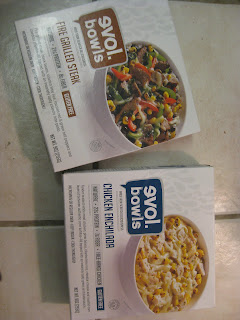________________________________________________________________
For those with gluten sensitivities, grocery stores are full of potential pitfalls with serious health consequences.
Because there are currently no standards for labeling something gluten-free, the very foods being marketed and sold as safe might contain the protein present in wheat, rye, barley and contaminated oats that is so harmful to people with gluten-related health issues. There are even foods labeled "gluten-free" that have fine printed elsewhere on the package warning "manufactured in a plant that contains wheat."
"It has caused such a great deal of anxiety about the safety of foods not to have these guidelines," said Pamela Cureton, a registered dietitian who works for the University of Maryland's Center for Celiac Research. "There isn't anything missing from the gluten-free realm these days. There are so many alternatives -- pastas, cereals, cookies, cakes and pies -- but the message has been so confusing."
With the first-ever government definition of the term "gluten-free" on the horizon, that could finally change.
Earlier this month, the Food and Drug Administration announced it was re-opening a 60-day consumer comment period on regulations for gluten-free labeling. In 2007, the agency first proposed standards that would ensure only those products with 20 parts per million gluten or less could actually be labeled "gluten-free," but that effort stalled. As Forbes reports, it took a 10,000-signature petition to help get the ball rolling again.
In a recent statement, the FDA's deputy commissioner for foods, Michael Taylor, said the move to regulate gluten-free labels reflects the agency's desire to "protect individuals with celiac disease from adverse health consequences, while ensuring that food manufacturers can meet the needs of consumers."
While many experts applaud the proposed changes, others say they have been slow to come, leaving consumers vulnerable to serious health complications. "The FDA has been lagging in getting this done," said Dr. Peter Green, director of the Celiac Disease Center at Columbia University. "We need adequate labeling guidelines -- now."
Current estimates suggest that one percent of the general American population has celiac disease, a digestive condition that damages the small intestine and can lead to decreased absorption of key nutrients. Put another way, the University of Chicago Celiac Disease Center says the number of people with celiac disease is roughly equal to the population of Nevada.
In addition to those with full-blown celiac, there has been a surge in people with gluten sensitivity, or intolerance as it's sometimes called. Experts are not certain what is driving the uptick in gluten sensitivity, though Green said it could simply be that more people are becoming aware of the issue and seeking help. Gluten itself might be changing to become more "glutenous," he said, while genetic predispositions and environmental factors could also play a role.
Green added that it is difficult to quantify the increase in gluten intolerance because there is no definitive test for sensitivity and the health issue is only beginning to be understood.
A University of Maryland study published earlier this year in the journal BMC Medicine suggested that gluten sensitivity is different from celiac disease both at the molecular level and in terms of the body's immune system response. In a statement, the study's main researcher described it as a spectrum, with people who have no problem tolerating gluten on one end and people with celiac disease on the other. Individuals with gluten sensitivity fall somewhere in the middle.
For people in that more nebulous category, the potential health benefits of the FDA's proposed gluten-free labeling rules are less cut-and-dried than for those with celiac disease, who must follow a strict gluten-free diet for life.
"One person [with gluten sensitivity] could possibly take the croutons off their salad and be OK," Cureton explained. "So for that person, changes in food labeling are probably not going to make a big difference. But for someone with more of a sensitivity, they really need to know if what they are eating is truly gluten-free."
In spite of the many questions still surrounding this health issue, the gluten-free food market is thriving: It could be worth more than $4 billion by 2015, according to a 2010 report released byDatamonitor, a market research company. Some reports suggest that sales are being driven by people jumping on the latest health craze. But sales are also tied to the increasing number of people with actual sensitivities or celiac disease, and for those people, FDA labeling regulations should be a welcome change.
"The consumers and the industry have been anxiously awaiting these guidelines," said Dee Sandquist, a registered dietitian and spokeswoman for the American Dietetic Association. "Consumers want to know that their food is safe, and manufacturers want to have clear criteria that helps them ensure it is."












